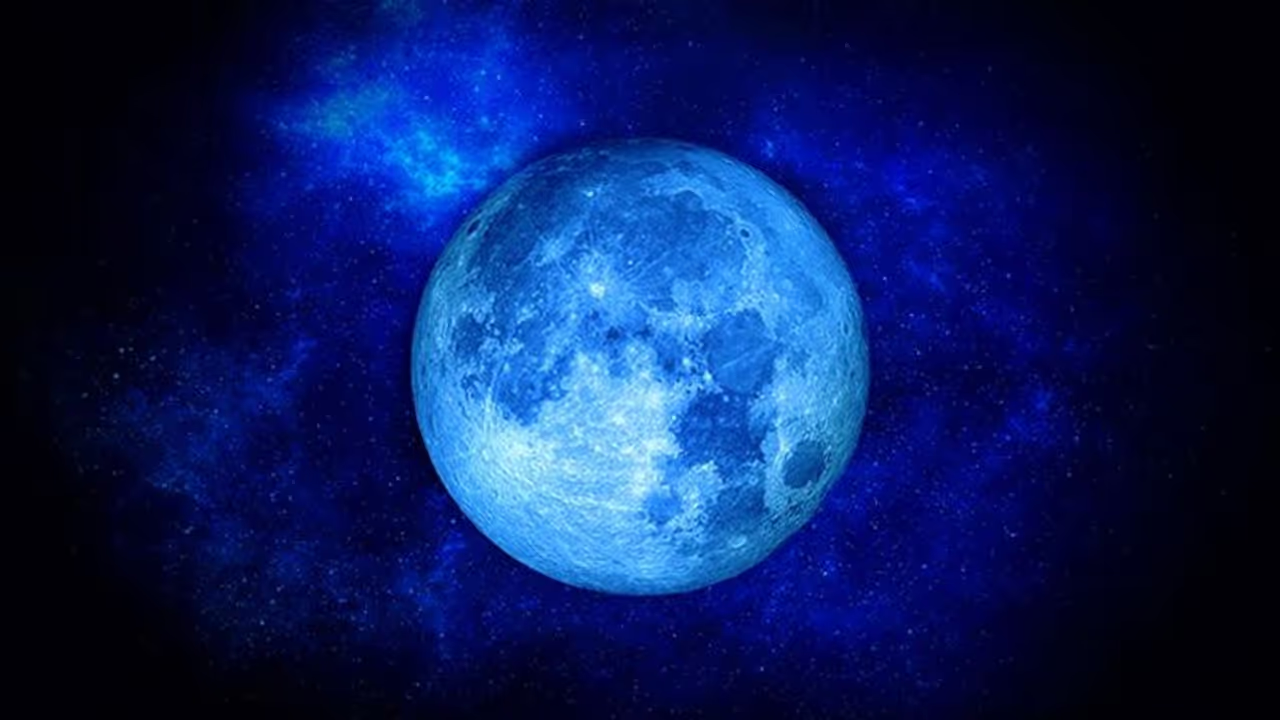Super Blue Moon 2023: Prepare yourself for an extraordinary astronomical event as the super blue moon is poised to illuminate the night sky on August 30. This impending occurrence presents a unique opportunity to witness a captivating celestial phenomenon. Let's delve into the details of this blue moon event and explore what sets it apart
Get ready to witness a remarkable celestial event as the super blue moon graces the night sky on August 30. This rare occurrence, often referred to as a 'once in a blue moon' event, holds special significance this year as it coincides with Raksha Bandhan celebrations during the day. As the moon illuminates the night, it will not be blue in color but rather exhibit a stunning shade of orange. To unravel the mystery of this phenomenon, let's delve into the details of what a blue moon is and how frequently it occurs.

Timing
This rare occurrence, coinciding with Raksha Bandhan celebrations earlier in the day, offers a unique opportunity to witness the moon at its brightest and most majestic. The super blue moon is expected to reach its peak splendor at 9:36 pm ET or 7:06 am IST.
ALSO READ: NASA declares annular solar eclipse ‘ring of fire’ in October; read details
What Exactly is a Blue Moon?
Contrary to its name, a blue moon doesn't actually refer to the moon's color. There are two distinct definitions of a blue moon, each associated with different lunar occurrences. The first definition, recognized by NASA, relates to a seasonal blue moon. This term is used when a season contains four full moons, and the third full moon within that season is termed a blue moon.
ALSO READ: Raksha Bandhan 2023: Significance, puja rituals, auspicious timings, Mantra
Conversely, the second definition pertains to a monthly blue moon. This occurs when two full moons fall within the span of a single calendar month. Initially considered a misinterpretation, this concept has gained acceptance over time, and it is the one most commonly referred to today.
How Often Does a Blue Moon Occur?
The lunar cycle spans approximately 29.5 days, completing 12 full cycles in roughly 354 days. Given that a year consists of around 366 days, an extra full moon emerges about every two and a half years. This additional full moon, occurring outside the standard naming sequence, is what we colloquially call a "blue moon."
On average, a full moon occurs every 29 days, and there is potential for two full moons to grace a single month due to the varying lengths of months. However, blue moons remain relatively rare, taking place approximately once every two and a half years.
Notably, the year 2018 witnessed a unique occurrence where two blue moons appeared just two months apart, with one coinciding with a lunar eclipse—a rare spectacle indeed. As for blue moons aligning with supermoons, where the moon appears larger and brighter due to its closer proximity to Earth, such events occur approximately every 10 years. The upcoming convergence of a blue moon and a supermoon is expected in January and March 2037, providing another opportunity to witness this breathtaking phenomenon.
